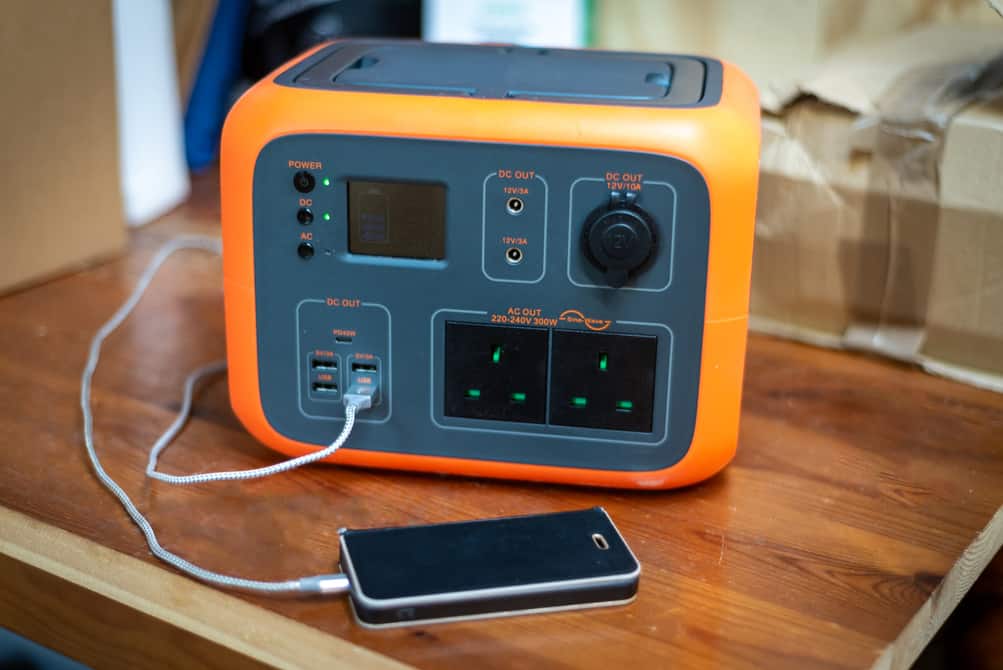The choice between solar and battery power solutions has become increasingly complex. Whether you’re planning for emergency backup, outdoor adventures, or sustainable living, understanding the differences between these technologies is crucial for making an informed decision.
Understanding Power Storage Options
The fundamental difference between solar and battery power lies in their core functions. Solar power systems, which typically include a solar array, convert sunlight directly into electricity. This energy can be used immediately or stored for later use. Battery systems, on the other hand, store electrical energy from various sources, including solar panels, grid power, or other generators.
Modern power solutions often combine both technologies. For example, Bluetti power station generators integrate battery storage with solar charging capabilities, offering the benefits of both technologies in a portable package.
Comparing Core Technologies
Solar power systems rely on photovoltaic cells to convert sunlight into electricity. Their efficiency has improved significantly in recent years, with modern panels achieving 15-22% conversion rates. Understanding battery capacity is crucial when comparing these systems, as it determines how much energy can be stored and used when needed.
Battery technology has also evolved, with lithium-ion batteries dominating the market due to their high energy density, longer lifespan, and decreasing costs. These advanced batteries offer better performance and reliability than traditional lead-acid batteries, making them ideal for stationary and portable applications.
Cost Analysis
Initial investment varies significantly between solar and battery systems. Solar installations typically require higher upfront costs but offer lower operating expenses over time. Battery systems, particularly portable units, often have lower initial costs but may need replacement sooner.
For those interested in sustainable options, solar generators provide a green alternative with potentially significant long-term savings. While the initial investment might be higher than traditional battery-only solutions, the ability to generate free energy from sunlight can offset these costs over time.
Performance Factors
Weather dependency is a crucial consideration for solar systems. While solar panels can still generate some power on cloudy days, their output is significantly reduced. Battery systems offer more consistent power delivery but require regular recharging from an external source.
System lifespan varies considerably:
- Solar panels typically last 25-30 years.
- Lithium batteries usually last 5-15 years.
- Lead-acid batteries may need replacement every 3-7 years.
Application Scenarios
Different scenarios call for different power solutions. For portable power for camping, battery-based systems or solar-battery hybrids often provide the best balance of portability and reliability. Larger solar installations with battery storage might be more appropriate for home backup power.
When considering portable generator emergency preparation, hybrid systems offer the best of both worlds: immediate power availability from batteries with the ability to recharge using solar panels during extended outages.
Environmental Impact
Solar power systems generally have a lower environmental impact over their lifetime despite the energy-intensive manufacturing process. Battery systems’ ecological impact varies significantly based on chemistry type and disposal practices. Both technologies are becoming increasingly recyclable, though battery recycling infrastructure is currently more developed than solar panel recycling.
Maintenance Requirements
Solar systems typically require minimal maintenance beyond occasional cleaning and inspection. Battery systems need more regular attention, including:
- Monitoring charge levels.
- Maintaining proper storage conditions.
- Regular testing and inspection.
- Periodic replacement.
Making the Right Choice
Selecting between solar and battery power depends on various factors. Our guide on how to choose portable power can help you evaluate:
- Your specific power needs.
- Available space and installation requirements.
- Budget constraints.
- Local climate conditions.
- Future expandability needs.
Summary of Pros And Cons
It’s essential to understand the pros and cons of solar and battery options. This table will help you make an informed decision based on your needs and preferences:
| Pros | Cons | |
|---|---|---|
| Solar Generators | Eco-friendly and clean energy sourceSafe, as they don’t require flammable fuelsFree energy from the sun. Low operational costs | Dependent on sunlight, making them less reliable in inconsistent or low sunlight conditions. Generally slower charging times than battery optionsHigher upfront costs for panels and equipment. Can require professional installation and setup |
| Battery Power Stations | Immediate power availability. Can be used indoors and outdoors. Simple to set up and use. Available in various sizes and capacities | Requires regular rechargingDependent on the availability of external power sources. Can degrade over time, leading to reduced capacity and performance. Not as eco-friendly as solar options |
Conclusion
The choice between solar and battery power isn’t always an either/or decision. Many modern systems combine both technologies to provide reliable, sustainable power solutions. Consider your specific needs, budget, and environmental priorities when making your choice. A hybrid approach often offers the best balance of reliability, sustainability, and cost-effectiveness.
Technology in both fields continues to advance rapidly, with efficiency improvements and cost reductions making both solutions increasingly accessible to consumers. Whether you choose solar, battery, or a hybrid system, proper sizing and selection will ensure your power needs are met effectively and efficiently.

Leave a Reply